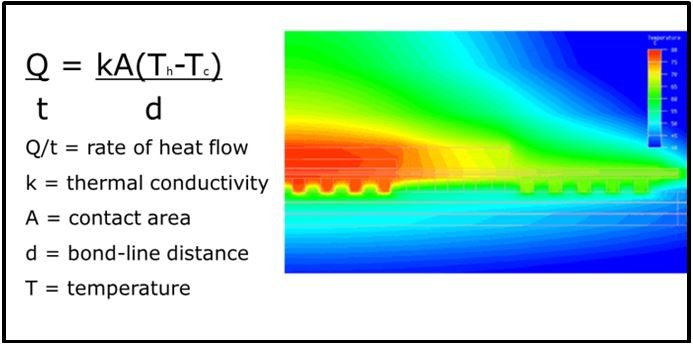As promised, here are some excerpts from a paper that I co-authored with my colleagues, Tim Jensen and Sunny Neoh. Tim recently presented this paper at SMTA PanPac. The paper discusses how InFORMS® can help you reduce voiding, improve reliability, and enhance solder performance in high-power applications.
Solder joints are being challenged in high power applications like never before. In addition to providing mechanical and electrical interconnections between components and boards, solder joints also help to dissipate significant amounts of heat. The schematic below shows the factors that influence heat flow.

Some solders perform quite well as thermal interface materials. For instance, SAC solder has a thermal conductivity of about 35W/mK. In comparison, thermal greases are often in the range of 1–5W/mK. Therefore, the solder is much more capable of dissipating the heat generated by a power device. Contact area is another region in which solder performs well. When forming an intermetallic bond at the interfaces, the contact area really benefits from the use of solder vs. thermal grease.
Areas that can potentially hinder the thermal performance of a solder joint include the bondline distance. Because the soldering process involves the metal becoming molten, the component floats on the molten solder due to the surface tension. Unfortunately, when a component floats on molten metal, there is no guarantee that the component will remain parallel upon solidification. This lack of parallelism can result in hot spots. Additionally, this lack of control also creates variability in thermal performance from one device to another.
Another area that negatively impacts thermal performance is voiding within the solder joint. Even though solder transfers heat very well, large voids will act as an insulator and significantly slow that thermal transfer.
Be sure to check back February 16th for more about this topic. I will be talking about the technology advancement of InFORMS®
'Til Next Time,
Adam



